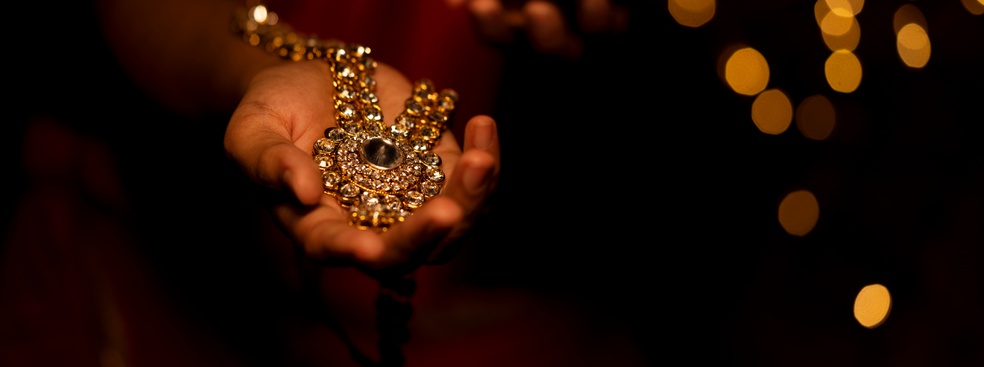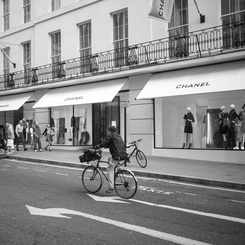With ESSEC Knowledge Editor-in-chief
India has potential to be the next big thing in luxury - but it’s not there yet. Going by financial data and share prices, the pandemic and the economic downturn could not dent the scope and scale of luxury brands. The ever-widening gap between luxury fashion brands and the rest of the industry is at its peak, and Hermès and LVMH are leading the charge. Hermès ballooned past $218 billion in value last week, its highest ever, making it one of the most valuable companies in Europe and the second highest in luxury fashion behind LVMH. LVMH saw a record $86bn in revenue in 2022 and is valued at more than $450bn, making it one of the most valuable companies in the world. This doesn’t mean that they are complacent: Hermes is opening new stores in China, while Dior and LVMH are pivoting towards India, still an underperforming market for luxury brands. Dior recently put a spotlight on India by holding its Pre-Fall Show in Mumbai in front of The Gateway of India and the historic Taj Palace.
Recent decades have seen the rise of the luxury industry in China, now the world’s biggest market. But some geopolitical uncertainties still loom large until the Chinese tourists return to Europe in full force. This begs the questions: will India be the next big thing in luxury? Ashok Som explores India’s potential in his latest book, The Road to Luxury: The New Frontiers in Luxury Brand Management.
Luxury is nothing new to India. Diamonds were discovered in the Golconda mines a thousand years ago. The Mughal era of the 16th century was considered a golden period for luxury in India, where emperors and nobles adorned themselves with jewels, fine textiles, and exquisite perfumes. This centuries-long tradition of royalty and aristocracy lasted until India was colonized by the British in 1857. Fast forward to 2023. With a climate more friendly to foreign business and a rise in disposable income, the country has again attracted the attention of the likes of LVMH, Richemont and Kering brands. The country’s politics, combined with significant wealth inequality and infrastructure issues, have not made it a particularly fruitful market in the past. But the tides may be changing. With new regulations like increasing ATM cash withdrawal limits, use of mobile payment systems, a fintech-savvy population, the rise of the middle class, and a rapidly increasing number of high net worth individuals, all the elements are in place for ushering in an era of luxury adoption. It’s definitely easier than before to buy yourself a luxury bag or a new watch in the country: while previously boutiques were only found in only five star hotels or a few select malls in the capital cities of the states, there are now more luxury retail malls ready for business.
Barriers to growth
That said, growth to date has definitely been slow, especially compared to that of China. Why?
Dr. Som notes that there’s a wide array of alternatives available from local designers and artisans. India has a unique culture and aesthetic, which can be quite different from Western luxury brands. The main spending is still around the “big fat Indian wedding”. In India, Western fashion is never the hottest trend. As a result, the luxury market has been concentrated in products like accessories, watches, cars and houses. Young Indians, educated and well-travelled, are increasingly snapping up beauty, skincare, and perfumes from luxury brands.
The import duties and taxes are among the world’s highest. Locations such as Singapore, Dubai and even Paris and Milan are better alternatives to buying luxury products. This means that Indian consumers can wait it out until they have a chance to go shopping abroad. There is still a lack of motivation to buy such expensive products at home. Still, knowledge of heritage brands is by-and-large limited, even for the educated. There are various possible explanations for this. Semiotic definitions of consumption values can throw some light on this behavior pattern. It could be that the logic of need is not there yet, nor the logic of desire. It could also be the logic of non-interest, as perhaps Indian consumers have not yet witnessed the logic of pleasure as their Chinese counterparts have done. The new generation of consumers with substantial disposable income are relatively new to the luxury market, and may not be familiar with the history or heritage of luxury brands. This can make it difficult for luxury companies to establish their brand identities and connect with consumers on an emotional level.
Another reason is a lack of space. While luxury brands have expanded their brick-and-mortar offer, opening a retail location in India remains a challenge. This is because there is a lack of available options: there is not always space in a neighborhood conducive to luxury shopping, and there are strict regulations on retail ownership. At this point, Hermès is the only brand with a standalone store, located in Mumbai, as opposed to locations in luxury hotels or malls.
India also has a lack of infrastructure, and many different states and state capitals, making foreign brands hesitant to invest. The government has launched a variety of initiatives to increase India’s attractiveness to foreign investors and increase Internet coverage. If these pay off, they could lead to an increased luxury presence in India and more consumers shopping online and in person.
What is needed to pivot?
Despite these challenges, India remains one of the most promising future markets. For luxury companies, it is a challenge to understand and adapt to this market. Luxury companies have been waiting for almost two decades and the wait is still not over. The market is not at all like China. In China, there is one political party and one official language, which is not the case in India. Communist China may have had a strong handicraft industry, but its population could not buy goods for generations due to the communist regime. There is a similar situation in India, due to the oppression from the British, but the population was always free to consume. The Maharaja Bhupinder Singh of Patiala ordered his famous necklace from Cartier in 1928. It is not by chance that Cartier has now created a special division for the Indian consumers and the Indian diaspora. Dior has recently collaborated with Indian artists and designers to create unique and culturally relevant products. For example, the brand has worked with Indian artist Kalyani Chawla to create a limited-edition collection of handbags that feature Indian embroidery and motifs. Gucci animal motifs were sourced from Mumbai for its collections.
As mentioned earlier, luxury skincare is a growing market, driven by Indian women. The repeal of homophobic laws also means that the LGBTQ+ community feels more free, leading to increased spending on new gender-neutral makeup and clothing offers. There’s also an increasing community of older people who finally have disposable income and want to emulate what they see in western media, dubbed “seenagers” by the media (senior teenagers): they’re making the most of their golden years, and spending on luxury products is part of that. Finally, recent changes in tax laws for foreign spending will also play a role in the conversation.
Keys to success
Dr. Som also outlines strategies that luxury brands can employ to make the most of the Indian market, at least at the initial stages.
-
Understanding who their consumers are and how they are different from those in other markets: for instance, different style choices like lehengas, saris, kurtas that are usually worn during Indian marriages (an untapped niche in luxury)
-
Integrating cultural elements into the product range through limited collections. Brands have recognized this opportunity. Lladro, a Spanish luxury brand, launching their best-seller idol of the god Ganesha, Bulgari creating the mangalsutraor “auspicious thread,” that is tied around a Hindu bride's neck during the wedding ceremony, a symbol that the couple is bound in matrimony and an indication of the bride's new status as a married woman, Hermes adopting motifs of horses and elephants from India for their scarves known as the Maharaja & Maharani collection, Gucci adopting symbols of animal motifs for their bags and accessories, Bottega Veneta launching a “Knot India” clutch, Canali and Zegna designing a bandhgala (a closed-neck jacket)
-
Respecting the local culture and heritage of Indian jewellery tradition: jewelry buying is big in India for various occasions. Brands could introduce a line of jewellery inspired by Bhupinder Singh, the Maharaja of Patiala and Maharani Gayatri Devi of Jaipur, to name a few.
After China, which country will see the biggest boom in luxury consumption? With changing tides in India, it could be the next big thing- but in the long-term, as noted by the CEO of Prada back in 2004: “India is potentially interesting for us, not now, but in the long term. You need to look 50 or 100 years into the future”. While it’s been almost 20 years, the statement still rings true: there’s untapped potential, but it’ll take patience just like in any sport, such as surfing. A budding surfer can see the shore, but it is very difficult to predict the path to reach the shore. The path is there, but its twists and turns are not yet clear.








